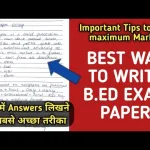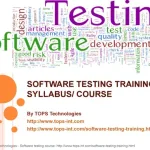The Class 11 English Syllabus 2021-22 is designed to help students strengthen their reading, writing, and comprehension skills while introducing them to a wide variety of literary genres and themes. Developed by CBSE (Central Board of Secondary Education), the syllabus aims to enhance critical thinking, encourage creative expression, and build a solid foundation for higher-level English learning in Class 12 and beyond.
Let’s dive into what this year’s syllabus has to offer.
Section-Wise Breakdown of the CBSE Class 11 English Syllabus 2021-22
The syllabus is broadly divided into three main sections:
1. Reading Comprehension
What’s Included:
-
Unseen passage (factual, descriptive, or literary)
-
Case-based or data-based passages (charts, tables, etc.)
What You’ll Learn: Students will learn how to quickly understand and analyze unseen texts. This section helps improve reading speed, vocabulary, and the ability to interpret information.
2. Writing Skills and Grammar
Writing Tasks:
-
Note Making & Summary (based on a passage)
-
Short Writing Tasks: Notice Writing, Poster Making, Advertisements
-
Long Writing Tasks: Business Letters (enquiry, placing orders), Speech Writing, Article Writing
Grammar Topics:
-
Determiners
-
Tenses
-
Re-ordering of Sentences
-
Clauses
-
Modals
What You’ll Learn: Students develop formal writing skills and refine their grammar usage—both essential for academic success and everyday communication.
3. Literature
This section includes two main textbooks: Hornbill (Main Reader) and Snapshots (Supplementary Reader).
Hornbill – Textbook
Prose:
-
The Portrait of a Lady – Khushwant Singh
-
We’re Not Afraid to Die… if We Can All Be Together – Gordon Cook & Alan East
-
Discovering Tut: The Saga Continues – A.R. Williams
-
The Ailing Planet: The Green Movement’s Role – Nani Palkhivala
-
The Browning Version – Terence Rattigan
-
The Adventure – Jayant Narlikar
-
Silk Road – Nick Middleton
Poems:
-
A Photograph – Shirley Toulson
-
The Laburnum Top – Ted Hughes
-
The Voice of the Rain – Walt Whitman
-
Childhood – Markus Natten
-
Father to Son – Elizabeth Jennings
Skills Developed: Through prose and poetry, students explore diverse human experiences, environmental awareness, relationships, emotions, and imagination.
Snapshots – Supplementary Reader
-
The Summer of the Beautiful White Horse – William Saroyan
-
The Address – Marga Minco
-
Ranga’s Marriage – Masti Venkatesha Iyengar
-
Albert Einstein at School – Patrick Pringle
-
Mother’s Day – J.B. Priestley
-
The Ghat of the Only World – Amitav Ghosh
-
Birth – A.J. Cronin
-
The Tale of Melon City – Vikram Seth
Skills Developed: This book emphasizes narrative techniques, moral lessons, and cultural insights. It boosts comprehension and introduces students to world literature.
Examination Pattern & Marks Distribution (2021-22)
| Section | Marks |
|---|---|
| Reading Comprehension | 18 |
| Writing Skills and Grammar | 16 |
| Literature (Hornbill + Snapshots) | 26 |
| Internal Assessment (ASL, Projects, etc.) | 20 |
| Total | 80 (Theory) + 20 (Internal) = 100 |
Question Types:
-
Multiple Choice Questions (MCQs)
-
Very Short Answer (1-mark)
-
Short Answer (2-4 marks)
-
Long Answer (6 marks)
Recommended Books & Resources
-
Hornbill – NCERT Main English Reader
-
Snapshots – NCERT Supplementary Reader
-
Wren & Martin – For grammar practice
-
BBC Compacta or Together With – For additional practice papers
-
CBSE Official Website – For sample papers and marking schemes
Study Tips & Exam Strategies
-
Stick to the NCERT books – All questions in the board exam are based on them.
-
Make a weekly reading & writing schedule – Focus on a mix of literature, grammar, and writing tasks.
-
Revise grammar regularly – Daily 10-minute grammar drills go a long way.
-
Practice past year papers – This helps understand question trends and time management.
-
Use flashcards for vocabulary – Especially for poetry and prose interpretations.
FAQ for Class 11 English Syllabus 2021-22
Q1. Is the Class 11 English syllabus 2021-22 the same for all CBSE schools?
Yes, CBSE schools follow the same NCERT-based syllabus across India.
Q2. Are poems and stories from both Hornbill and Snapshots important for exams?
Absolutely! Questions come from both books, so it’s important to study all chapters.
Q3. What’s the best way to prepare for the unseen passage section?
Read newspapers and magazines daily. Practice comprehension from sample papers regularly.
Q4. How many marks is the internal assessment worth?
The internal assessment is worth 20 marks, including ASL (Speaking & Listening), project work, and class participation.
Q5. Are the grammar questions objective or descriptive?
Mostly objective or short-answer based. Practice MCQs and sentence correction exercise.
Latest Posts
- Step-by-step guide to download and apply for jee mains admit card 202
- Comprehensive 2025 government holidays and recruitment details for job seekers
- JEE Mains Admit Card 2025: Your Step-by-Step Guide to Downloading the Hall Ticket
- Everything You Need to Know About 2025 Government Holidays Recruitment
- Comprehensive Guide to rrb d group recruitment 2025 – Eligibility, Vacancies, and Application
- Detailed guide to nps trust recruitment 2025 vacancies, eligibility and apply process
- Comprehensive guide to hpcl recruitment 2025 notification, vacancies, and application process
- ignou bed admission 2025 complete recruitment guide with eligibility and process
- Comprehensive Guide to Indian Army Agniveer Recruitment 2025 Notification and Jobs
- Everything You Must Know About CBSE Board Exams 2025 Changes & New Rules




